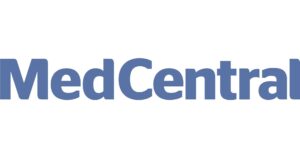Personalized perioperative pain management reduces opioid use
Editor's Note
Helping patients taper opioids preoperatively before deploying multimodal care strategies can help prevent instances of patients already with prescriptions going home with even higher doses.
That’s the main takeaway from an April 22 MedCentral interview with Marie N. Hanna, MD, division chief for regional anesthesia and acute pain management, and medical director of the perioperative pain program at Johns Hopkins University. Speaking at the American Academy of Pain Medicine (AAPM) PainConnect conference in Austin, Texas, Dr Hanna explained that patients on chronic opioid therapy are routinely discharged from surgery with even higher opioid doses, with little oversight for tapering. She described how her team at Johns Hopkins launched a transitional pain program to address this need eight years ago, “before even it was declared an opioid epidemic because we sensed that the epidemic was coming.”
Specifically, the personalized pain program focuses on preoperative education and encouraging patients to taper opioid use before surgery, Dr Hanna explains. The idea is to not only ready patients for safer pain management, but also foster their engagement and willingness to reduce opioid intake.
The MedCentral Q&A highlights the use of multimodal analgesia—including regional anesthesia—and how it maintains continuity of care before, during, and after hospitalization. Even patients who have used opioids for many years have succeeded in tapering opioids and enhancing their physical and mental health, Dr Hanna said. Some, she noted, were able to discontinue opioids entirely within six months post-surgery, a result previously thought impossible.
Dr Hanna attributed the sluggish adoption of multimodal pain strategies across healthcare to limited education and entrenched prescribing habits. She told MedCentral that despite two decades of supporting evidence, some clinicians remain resistant, defaulting to opioid prescriptions without proper auditing or awareness of their long-term consequences.
The MedCentral interview also touched on emerging therapies. Dr Hanna expressed cautious optimism about suzetrigine, a new non-opioid pain medication, stating her team will celebrate its effectiveness only after observing opioid-sparing benefits in their own patients. As the incoming president of AAPM, she also highlighted the academy’s multidisciplinary mission and its evolving role in fostering the next generation of pain clinicians.
Visit MedCentral to read a full transcript or listen to the interview in its entirety.
Read More >>


 Free Daily News
Free Daily News